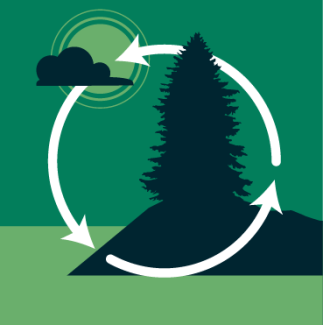Biogeochemistry Data Theme

Biogeochemistry data theme
Biogeochemistry is the study of the cycling of the fundamental chemicals that support life, collectively termed nutrients. NEON collects and produces data on nutrients, such as carbon, nitrogen and phosphorus, which move through the atmosphere, water bodies, soil, microbes, plants and animals to support understanding of nutrient cycling in a variety of ecosystems. NEON biogeochemistry data span the range of scales from individual soil microbes to ecosystem connectivity across the continent to support understanding of nutrient cycles and related changes in a variety of ecosystems.
NEON biogeochemistry data
In order to understand the cycling of key nutrients, NEON measures major biogeochemcial inputs, outputs, stocks, fluxes and processes. Resulting data quantify nutrient content in precipitation, plants, soil, surface water and groundwater. Biogeochemistry data products also include complex measurements, such as:
- Stream nutrient fluxes;
- Exchange of carbon between ecosystems and the atmosphere;
- Nutrient deposition from the atmosphere; and
- Remotely sensed data that indirectly measures plants and the nutrients they contain.
Quantifying nutrient content and rates of nutrient cycling fluxes within an ecosystem are crucial components of ecological science. Some biogeochemistry data products incorporate multiple NEON measurements: for example, biomass and carbon exchange estimations for the continent require models that incorporate remotely sensed vegetation data, eddy covariance measurements, plant community observations and plant nutrient analyses.
Ecological relevance
Anthropogenic changes to nutrient cycles are widespread and include the doubling of biologically available nitrogen on earth, increased phosphorus availability and indirect changes in cycling rates caused by changes in climate and precipitation patterns. Increased nutrient availability affects water, soil and air quality as well as plant growth. Certain nitrogen emissions contribute to the greenhouse effect and rising temperatures affect the carbon and nitrogen cycles in complex and interacting ways. Observing these impacts and their biogeochemical consequences is a central goal for NEON.
Research applications
NEON colocates biogeochemistry measurements with other scientific measurements, providing a unique opportunity to examine ecological change across relevant space and time scales. NEON data may be used to address complex ecological questions, such as:
- How do changes in terrestrial evapotranspiration rates relate to nearby stream discharge?
- How does warming alter decomposition rates and microbial activity in different ecosystems across a precipitation gradient?
- What is the distribution of carbon in biomass across the North American continent?
- How does nutrient pollution in streams affect invertebrate communities?
Key categories of measurements
- Inputs: atmospheric deposition, groundwater nutrient content and carbon uptake
- Outputs: stream nutrient export, evapotranspiration and respiration
- Stocks: biomass, soil carbon and nutrient pools
- Fluxes: stream nutrient fluxes, carbon exchange, evapotranspiration and plant litter (i.e., litterfall)
- Processes: decomposition, biomass production, microbial activity and stream metabolism